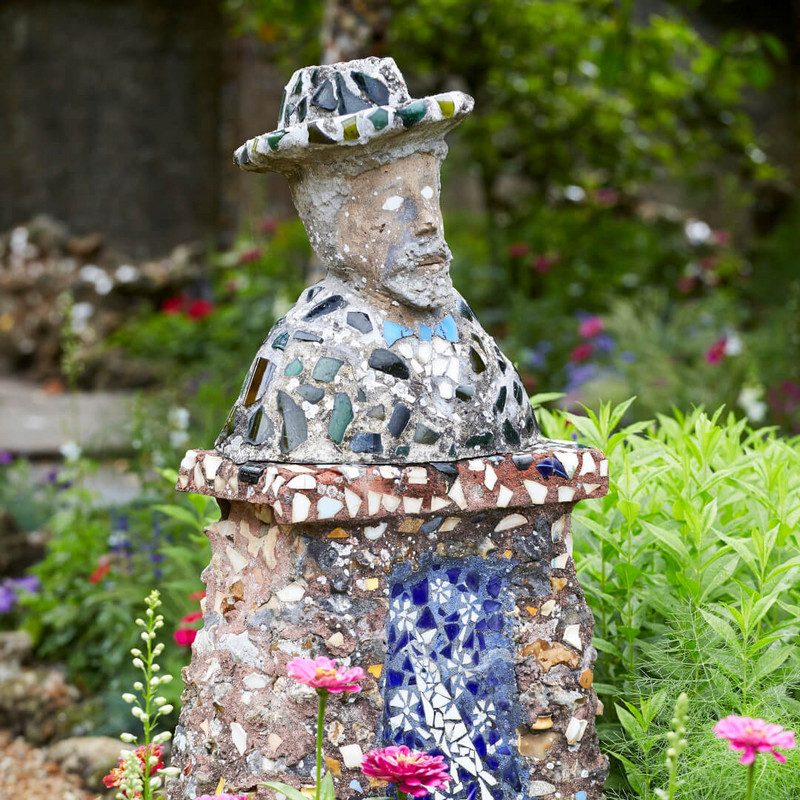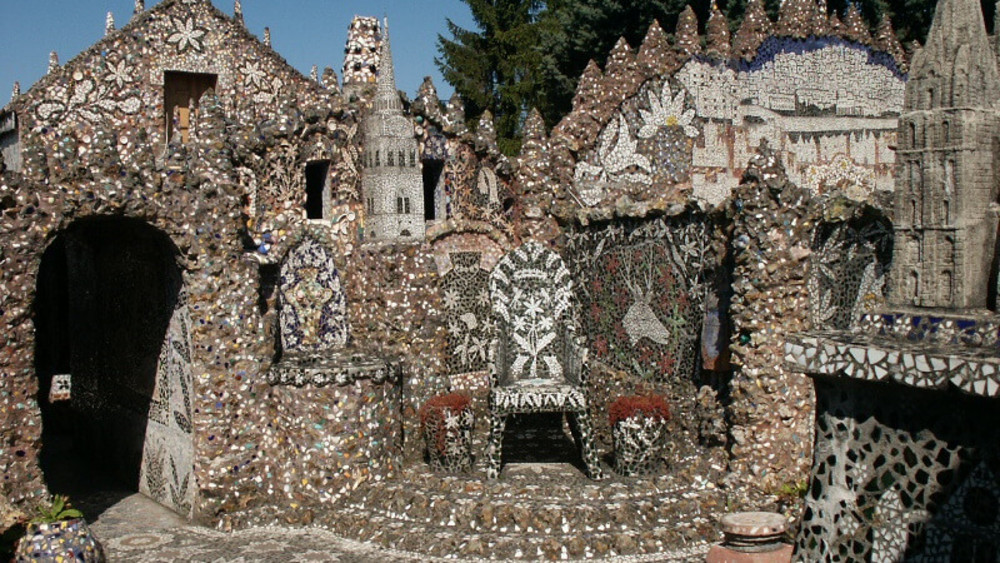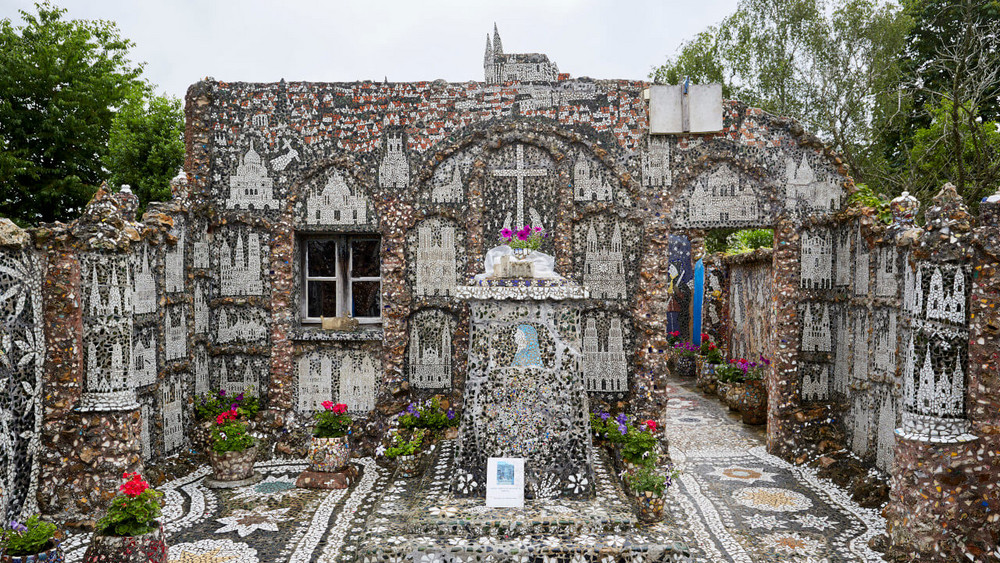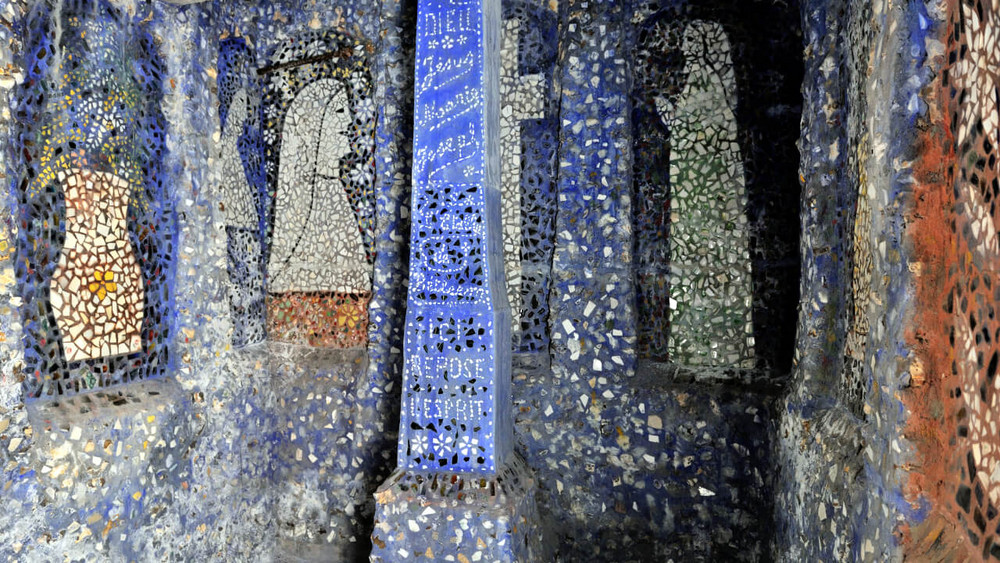There are places in Europe where time stands still, and then there are places where time explodes—shattering into shards of porcelain, bottle glass, and broken dreams. La Maison Picassiette in Chartres, France, is the latter: a kaleidoscope of shattered teacups and cathedral spires, pieced together by one man’s vision into something heartbreakingly beautiful.
Nestled just an hour’s train ride from Paris, Chartres is best known for its Gothic cathedral, a UNESCO World Heritage site famed for its stained glass and soaring architecture. But venture a little farther from the medieval center, down a quiet street in a residential neighborhood, and you’ll find another spiritual marvel—not carved from stone, but crafted from ceramic shards and painted porcelain.
This is La Maison Picassiette, a poetic, peculiar mosaic house built by a man with no formal training, no patron, and no plan—only passion.
A Hidden Gem in the Landscape of French Art
For travelers in search of the soul-stirring and the strange, La Maison Picassiette is the very definition of a hidden Europe treasure. Unlike the grandeur of the Louvre or the polished galleries of Montmartre, this site is raw, intimate, and personal. It’s also one of the most unique day trips from Paris, ideal for those looking to slip beyond the typical tourist path.

The house is a modest cottage from the outside. Blink and you might miss it. But step through the gate, and it’s as if you’ve fallen down the rabbit hole—into a garden of glittering dreams.
Every surface—walls, furniture, garden paths, fences, even trees—is covered in intricate mosaics. Shattered plates become flowers, glass bottles become radiant halos, and broken tiles bloom into suns, crosses, and stars. You’ll find entire tableaus honoring the Chartres Cathedral, the Eiffel Tower, biblical scenes, rural life, and even visions of fantastical dreamscapes that feel pulled straight from a fevered imagination.
The Man Behind the Magic: Raymond Isidore
The soul of this place is Raymond Isidore, known to locals simply as “Picassiette”—a play on “pique-assiette,” the French slang for a scavenger or someone who eats off others’ plates.
Born in 1900, Isidore worked as a cemetery sweeper in Chartres—a humble man, by all accounts quiet and unassuming. In 1938, he bought a small plot of land and began building his house. At first, he painted the interior walls with pastoral murals. But one day, while walking through the countryside, he picked up a piece of broken pottery—and something in his soul ignited.

Soon, his daily walks turned into treasure hunts. He collected discarded ceramics, glass shards, and broken tiles from dumps and construction sites. What others saw as trash, Isidore saw as art.
Over the next three decades, he transformed his home into a mosaic masterpiece, using cement, passion, and his own two hands. No grand gallery commissioned his work. No critics praised him in glossy magazines. Still, he persisted—compelled by something deeper than fame: a personal, spiritual devotion to beauty.
More Than Decoration: A Spiritual Vision
Isidore’s work wasn’t just artistic; it was devotional. Much of La Maison Picassiette’s imagery reflects his deep Catholic faith. The small chapel he built in his backyard is perhaps the most moving part of the property. Its altar, enshrined in colored glass and porcelain, radiates a reverent energy, like a shrine to lost joy.

Visitors often say they feel a quiet presence in the space—something holy, or at least profoundly human. In this way, La Maison Picassiette becomes more than just a mosaic house in Chartres. It becomes a form of prayer—a testament to a man’s longing to make sense of a chaotic world through fragments.
A Journey Through the Mosaic Garden
Walking through the garden, you’ll pass a sun-dappled bench adorned with floral mosaics, a miniature cathedral modeled after Chartres’ own, and fantastical scenes of cities, angels, and stars. It’s as if Gaudí and a folk artist met in a dream, with a splash of outsider art and a lot of heart.
Some walls depict dreams; others feel like nightmares. The color palettes shift—sunny yellows in one corner, brooding blues in another. You sense joy and sorrow fused together, like the mosaic pieces themselves: broken, but whole.

An Offbeat Pilgrimage for Art Lovers and Curious Souls
In a country brimming with grand châteaux and impressionist museums, La Maison Picassiette offers a deeply personal counterpoint—a reminder that greatness can emerge not from privilege or pedigree, but from perseverance and passion.
It has become a pilgrimage site for:
- Art lovers fascinated by outsider art and mosaic design
- History buffs intrigued by 20th-century folk artistry
- Travelers seeking off-the-beaten-path beauty on a short escape from Paris
If you’re someone who cherishes the overlooked and the poetic, this is your kind of place.
How to Visit La Maison Picassiette
Location: 22 Rue du Repos, 28000 Chartres, France
Getting There: Take a direct train from Paris Montparnasse to Chartres (about 1 hour). From Chartres train station, the mosaic house is a 25-minute walk or a short taxi ride.
Opening Hours: Varies seasonally; generally open March to October
Closed on Mondays and major holidays
Check the official Chartres tourism website for up-to-date times.
Tickets: Adults: ~€6 – Reduced rates available for students and groups
The Enduring Legacy of Picassiette
Raymond Isidore died in 1964, just before his art was fully recognized. But today, La Maison Picassiette stands as a beacon of raw creativity and resilience. It has inspired artists, architects, and dreamers from around the world.
It reminds us that art doesn’t need galleries, and beauty doesn’t need perfection. Sometimes, the most extraordinary things are made from what the world discards.
So if you travel to France looking for something different—something heartfelt and unforgettable—put La Maison Picassiette at the top of your list.
